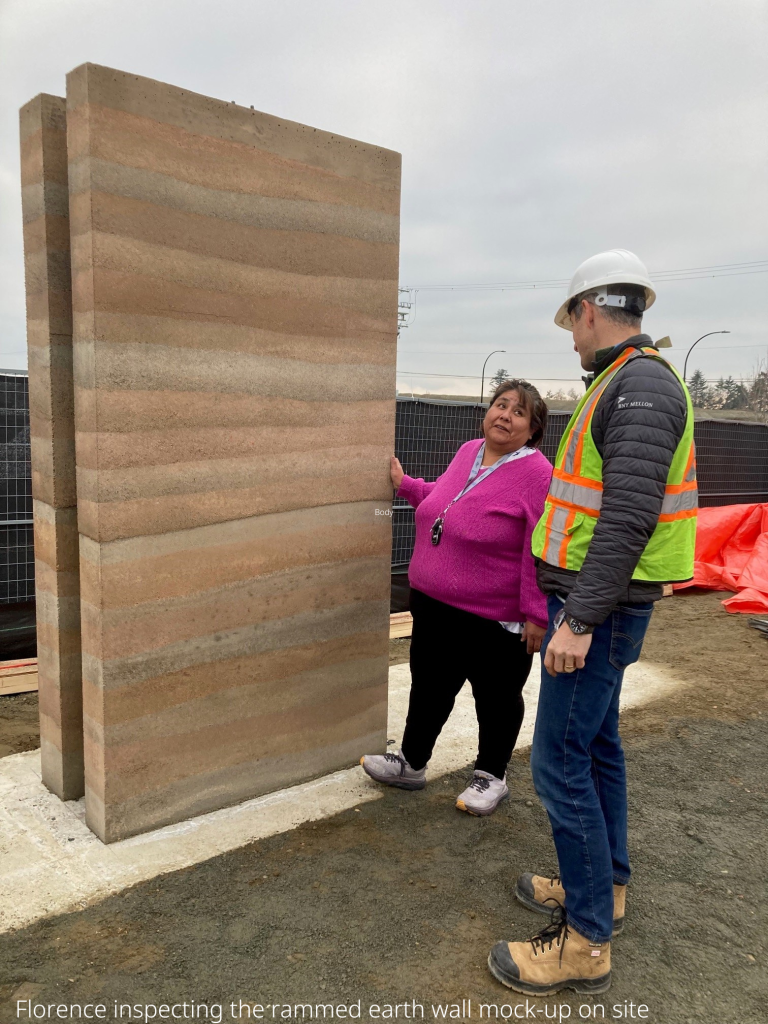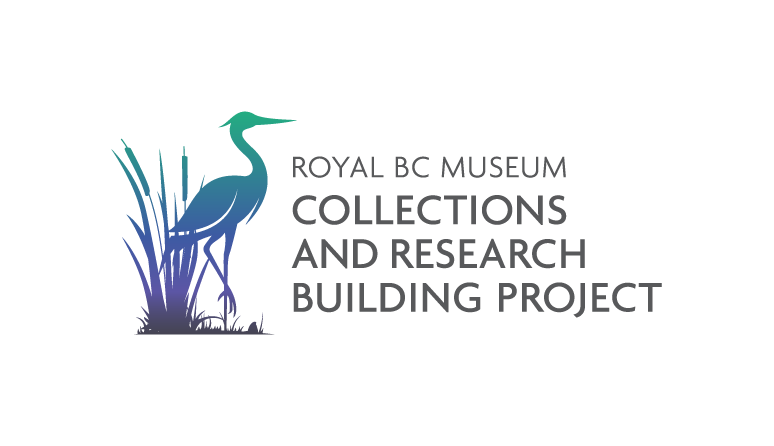The role of Indigenous Liaison Officer on the collection and research building project
Adapted from the Report on Multi-culturalism 2022/2023 – Province of BC. Page 215.
February 2024

The B.C. government is protecting the province’s history with the construction of the collections and research building (CRB) project – a new, state-of-the-art facility that will safely house the province’s collections, BC Archives and the Royal BC Museum’s (RBCM) research departments.
At the onset of project approval, the Province and RBCM established a partnership with the host First Nations on whose homelands the CRB project is being built. A unique position was created to ensure authentic integration of lək̓ ʷəŋən (pronounced le KWUNG gen) culture, values and interests at every step of the process from ideation through procurement to design and construction.
The multidisciplinary project team works closely with Rob Thomas of Esquimalt Nation and nəʔəmtənat (Florence Dick) of Songhees Nation. They both hold the role of Indigenous liaison officer (ILO), representing their Nations’ interests.
ILOs attend project meetings and contribute valuable insights and guidance on many aspects of the project. Very often, the ILOs share lək̓ ʷəŋən teachings that the team members integrate into both their personal lives and their professional work. As a result of the ILOs’ participation, thoughtfully integrated elements were brought into the procurement and ultimately the design-build contract. For example:
- Hiring goals for lək̓ ʷəŋən community members.
- Architectural direction to consider and reflect Coast Salish influences, such as orientation towards the sea and low profile/shed roofs associated with plank building design.
- Wise-practice archaeological approaches that reflect lək̓ ʷəŋən protocols related to cultural heritage and care for ancestors.
- Integration of lək̓ ʷəŋən language into signage throughout the outdoor learning classrooms.
- Installation of an outdoor fire-pit and gathering circle, creating a place for Indigenous and non-Indigenous ceremonies and gatherings.
- Conversion of the industrial landscape from that of a decommissioned gravel pit to a restored and reimagined site that serves to educate visitors about the local ecology and connection to local Indigenous culture inspired by local climate dynamics, the role of rainwater, land-based history, culture and seasonal dynamics.
The most impactful aspect of the role of the ILOs is the reciprocity and respect that is embedded into the project as a result of their full participation to support the formal partnership of Songhees and Esquimalt Nations. Authentic relationships are incrementally forming as newfound understanding of Indigenous ways of knowing and decision-making sink into the fabric of the project.
